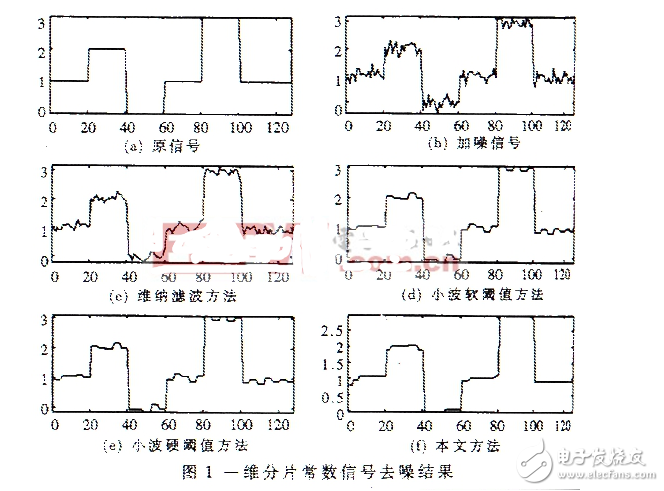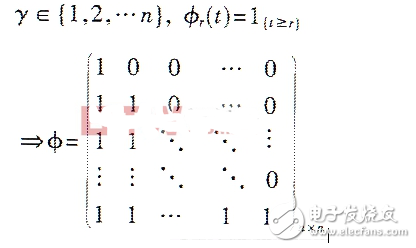The basis pursuit algorithm is an algorithm for solving the equality constraint problem of the unknown parameter L1 norm minimization.
Base tracking is a means of sparseing known coefficients that are commonly used in signal processing. The solution to transform the L0 norm in the optimization problem into the L1 norm is the basic idea of ​​base tracking.
For example, I originally had an optimization problem:
Min ||x||_0 (which is the minimum value of the L0 norm) subject to y=Ax.
This ||x||_0 means that there are many non-zero elements in x; then we ask min ||x||_0 to know what the solution x contains the most 0 elements.
However, the L0 norm is non-convex, and it is not very well solved. Then we turn to the optimization problem of the L1 norm.
Then, the base tracking algorithm is turned to solve
Min||x||_1 (which is the minimum value of the L1 norm) subject to||y-Ax||_2=0(2 norm)
This ||x||_1 is the absolute value of x; then we ask min||x||_1, which is the solution x that is the smallest absolute value.
More generally, for example, I ask for a linear equation
Ax=b
x is the unknown amount we ask for. This A matrix is ​​not a square matrix, it is an underdetermined matrix, which leads to a set of solutions for this linear system of equations. So which group do we want to solve?
If in general, you can use the least squares method to obtain a set of least squares solutions, that is, x = (A'A) ^ (-1) A'b. But now we are using base tracking, which is to get a set of solutions with the most 0 elements.
A new base tracking algorithm is proposed. The dictionary is adaptively selected according to the signal characteristics; the constrained extremum problem is transformed into an unconstrained problem by the approximate representation of the l1 norm, and a new iterative algorithm is used for fast solution; several typical signal experiments verify the results. The method has a good denoising effect. Keywords: base tracking dictionary denoising base tracking method is a new method in the field of signal sparse representation. It seeks to derive the most sparse representation of the signal from a complete (over-complete) set of functions (bases), that is, to accurately represent the original signal with as few bases as possible, thereby obtaining the intrinsic essential properties of the signal. The base tracking method uses the norm of the representation system as a measure of signal sparsity. The problem of sparse representation of the signal is defined as a type of constrained extremum problem by minimizing the l1 norm, and then transformed into a linear programming problem. At present, the base tracking method has a good application in the field of one-dimensional signal processing.
The representative of the Department of Statistics, led by David L. Donoho, used the base tracking method to obtain a lot of good application results in one-dimensional real signal denoising and super-resolution. Despite the use of a new linear programming algorithm, the interior point algorithm, the base tracking method is still computationally intensive due to the minimization of a global objective function in all dictionary vectors. Due to the difficulty in solving large-scale linear programming problems, the current base tracking methods are limited to one-dimensional signal denoising and super-resolution processing. This paper proposes a new way to solve the above-mentioned constrained extremum problem. Firstly, the dictionary is adaptively selected according to the signal characteristics. By the approximate representation of the l1 norm, the constrained extremum problem is transformed into an unconstrained problem, and an iterative algorithm is used to solve the problem quickly. Finally, several kinds of typical signal denoising experiments are passed. To verify the application effect of this method. Experimental results show that the improved base tracking method can be implemented quickly and stably. At the same time, it has a good denoising effect.

For the observed discrete signal s∈H, H is the Hilbert space, given the dictionary φ={φγ,γ∈Γ} in H, where Γ is the set of indices and φγ is the basis function in H, also known as the atom. The base tracking method defines the signal sparse representation problem as the following extreme value problem, ie

Among them, αγ(γ∈Γ) is a coefficient. If the vector in the dictionary is represented as an example of the matrix φ, the coefficient is expressed as a column vector, then the equation (1) can be expressed as min||α||1 subject to s=φα (2) in the case of noisy observation Consider the following model: y=s+σz where s is the true signal, y is the observed signal, z is the standard Gaussian white noise, and σ is the noise root variance. The base tracking method denoising comes down to solving the following optimization problems:

The above optimization problem is aimed at minimizing signal reconstruction errors while making the representation of the signal sparsest. The regularization parameter λ controls the balance between allowable error and sparsity. It can be seen from (3) that the core problem of de-noising by the base tracking method involves three aspects: the selection of atoms, the construction of the dictionary, and the design of the algorithm. Among them, the construction of the dictionary is an important part of the base tracking method. In order to represent the signal as accurately as possible, the dictionary and signal application are adaptive, or the bytes are derived from the learning of the signal. Usually, the dictionary used by the base tracking method is complete, over-complete, under-complete, and so on. The dictionary can be designed based on the prior information of the signal and the actual needs. The dictionary of general design is complete or overcomplete. For simple signal denoising, it is generally only necessary to construct a complete dictionary. For composite signal to noise problems, it is often necessary to construct an overcomplete dictionary. For a complete dictionary, there is also a sparse representation of the signal, because the noise is always singular. The main dictionaries used in this paper are: (1) Heaviside dictionary

The atoms in this dictionary are not orthogonal, but for any one-dimensional discrete signal s=(s1s2...sn) of length n has the following representation:

The Heaviside dictionary has an upper triangular shape and is simple in structure, and is good at capturing the mutation features in the slice constant signal. (2) Time-scale dictionary (wavelet dictionary) Take the Haar wavelet dictionary as an example: Your wavelet base: ψ=l[0,1], mother wavelet base: ψ=1[1/2,1], 1-1[ 0, 1/2] The Haar wavelet dictionary contains the translation and expansion transformation of the wavelet base and the translation transformation of the wavelet base. Let ψ=(a,b,v), where α∈(0,∞) is the scale variable, b∈[0,n] represents the position, and v∈{0,1} represents the gender. The Haar wavelet dictionary form is:

Contains n atoms to form a set of orthogonal groups. There are of course other types of wavelet dictionaries. Although some wavelet bases do not have explicit wavelet function expressions like Haar wavelet bases, their dictionaries have discrete structures similar to Haar wavelet dictionaries. The more commonly used ones are Daubechies, Coiflet, Symmlet, etc. A wavelet dictionary is applied to represent a sliced ​​smooth signal. (3) Heaviside dictionary + wavelet dictionary For the more complex composite signal, the most sparse representation of the signal can not be obtained under a single dictionary. At this time, several dictionaries can be synthesized to obtain an over-complete dictionary. For example, the Heaviside dictionary + wavelet dictionary.
Fiber Optic Patch Panel,Fiber Patch Panel,Fiber Distribution Panel,Optical Patch Panel
Cixi Dani Plastic Products Co.,Ltd , https://www.dani-fiber-optic.com